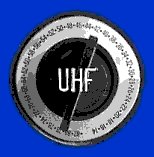

 |
 |
|
by K.M. Richards Channel 29 signed on as WIBF-TV on May 16, 1965. The call letters stood for owners William, Irwin and Benjamin Fox, named for the two brothers and their father who also owned WIBF-FM/103.9 in the Philadelphia suburb of Jenkintown. In fact, WIBF-TV was originally to be licensed in Jenkintown and required a waiver of the then-current rule prohibiting call letters to be shared in different communities of license in order to identify as Philadelphia.
Initially, channel 29 operated from 11:00am until around midnight (depending on when the post-news movie came to an end); its schedule for the next four years consisted of syndicated reruns -- such as December Bride, The Ann Sothern Show (also known as Private Secretary and Susie), How To Marry A Millionaire, and Whirlybirds -- old movies, Canadian soap opera Scarlett Hill, and some ABC programs not cleared by WFIL-TV/6 (primarily weekend cartoons, news programs Issues And Answers and ABC Scope, and daytime programming such as Where The Action Is, Dark Shadows, Never Too Young, and the early afternoon reruns of The Donna Reed Show and Father Knows Best). Newscasts began as a half-hour at 7:00pm and 15-minutes at 11:00pm but dwindled to five-minute headline summaries at 10:30pm by the end of 1966. Local WIBG/990 disc jockey Joe "Rockin' Bird" Niagara also hosted a daily teen dance program until 1967. In the final year under their original owners, WIBF-TV added more popular (Sgt. Bilko, The Untouchables and The Honeymooners) and more recent (F Troop, Time Tunnel and The Green Hornet) off-network reruns. In 1967, the entire daytime schedule consisted of stock market coverage, a format pioneered by KWHY-TV in Los Angeles and quickly adopted by many UHF stations in major markets, such as KVVV-TV in Houston. Not long after channel 29's sign-on, it was named the originating station for television station sales representative Vic Piano's proposed Unisphere Broadcasting System, which was to be operated -- as Piano described it -- "for the convenience of advertisers and program packagers" by carrying only fully sponsored programs, for 90 minutes per night. WIBF-TV's inclusion was due to Piano being their national sales representative; all five of his client stations were listed as future Unisphere affiliates. Near the end of 1966, the Foxes applied for the vacant channel 53 allocation in Atlantic City NJ, intending it to be a satellite of channel 29, but later withdrew the application before the comparative hearings were to begin; the CP, ultimately issued in August 1968 as WOND-TV, expired unbuilt and channel 53 didn't get on the air until 1980. Around the same time as the filing of the Atlantic City application, WIBF-TV moved to a taller tower and increased power in Philadelphia proper -- although applied for in 1966, it took until October 1969 before the move was made final by the FCC, due to concerns about interference to the directional array of WRCP/1540 -- and promoted the move with a viewer contest in which the prize was a two-week trip to Paris, home of the "small Eiffel Tower" (the new channel 29 tower, at 1,144 feet, was 160 feet taller than France's famous structure). The tower, which later also hosted WIBF-FM's antenna, was still called the "Fox Tower" by locals into the 21st Century.
In early 1974, channel 29 increased power six-fold, giving them a coverage area of 10,000 miles according to then-general manager Robert Weigand (reaching as far as Wilkes-Barre to the northeast, Harrisburg to the west, and Baltimore to the south). As noted in the caption to the photo at right, the new five-megawatt signal was far above that of any UHF station operating at that time. By 1979, WTAF-TV's schedule included heavy use of Hanna-Barbera cartoons and other programming distributed by Worldvision Enterprises, which Taft acquired that year. In the next decade, they included live coverage of baseball's Phillies, basketball's 76ers, and hockey's Flyers, as well as some ABC and NBC network shows that were not cleared by KYW-TV/3 and WPVI-TV/6. Many were surprised in 1983, when after WKBS-TV went dark Taft ran newspaper ads reminding viewers that "channel 29 is still around" ... yet failed to pick up any of their former competitor's programming. Three years later, channel 29 became an affiliate of the then-new Fox network, in what many have called "the biggest affiliation shuffle in Philadelphia television history" in which only ABC remained on its original affiliate; after several ownership changes, it is now owned by that network under the call letters WTXF. EXTERNAL LINKS

|
© World Radio History. Original site concept by Clarke Ingram. Site design and management by K.M. Richards.